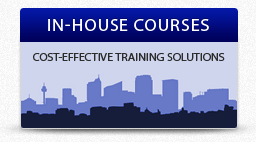ARCHIVE NEWS
Usability Engineering - Excel Partnership expands its training course offering to the Medical Device Industry
BS EN 62366: Medical Devices – Application of Usability Engineering to Medical Devices became a requirement in March 2010 to help companies establish a process which spans the design and development life cycle of medical devices. A process-based standard like ISO 9001, BS EN 62366 requires the adoption of a Usability Engineering Process, a 9-stage process which parallels those in ISO 14971: Medical Devices – Application of risk management to medical devices.
Usability of a product is the interaction between people and that product. Most companies realise that good usability is key if new products are to be successful in the market. Expensive redesigns, customer complaints and poor customer experience due to poor usability will inevitably result in lost revenue, something companies are far from willing to risk in today’s competitive market and fragile economic climate.
The risk for companies designing and manufacturing medical devises though is even higher, with lives at stake as well as financial risk from patient litigation and legal penalties. With increasingly complex user interfaces and with usability issues accounting for more than a third of medical device incidents, reducing the risk of medical errors that result from poor interface design must be a top priority for medical device manufactures.
In brief, the Usability Engineering Process is built around the following stages:
- Identify the use or application of the medical device
- Identify and prioritise frequently used functions, i.e. basic needs and performance needs for the device to function as intended as well as added-value aspects
- Identify potential risks and hazards relating to the device’s usability
- Identify primary functions that relate to the safe and effective use of the device
- Describe usability specifications, i.e. the user interface requirements
- Create a test plan, i.e. how the usability will be validated and product evaluated
- Design the user interface
- Verify the user interface
- Validate the user interface with users
The EU (and US) adopted BS EN 62366 into their regulatory frameworks and amendments to the essential requirements relating to usability were introduced to the EU Medical Device Directive 2007/47/EC. Both new medical device developments and existing medical are impacted by the revisions to the essential requirements which provide for much clearer and more specific usability requirements. Recital 18 of the Directive states "the need to consider ergonomic design and the training and knowledge of the user", in the essential requirements. Under the EU regulatory guidance, changes to the "Essential requirements and harmonised standard" also directly impact drug-delivery devices regulated as medicinal products.
As Excel Partnership is already an established provider of auditor training in the Medical Device industry, developing a 1-day course focusing on Usability Engineering and BS EN 62366 to allow delegates to extend their current risk management knowledge for medical devices, was a logical step forward. Addressing Usability Engineering is a key risk management activity and links closely with the widely used ISO/IEC 14971 standard, so this course compliments Excel's existing programmes relating to Medical Devices. "Excel's Usability Engineering course will help delegates to apply the usability engineering process to medical devices and understand how to prepare the documents for the key stages of this process," says David Owen, Tutor for Excel Partnership
For further details of Excel's in-house Usability Engineering course or if you'd like to discuss your requirements and request a proposal, please contact us (tel: +44(0) 1428 751027)


